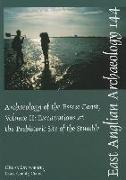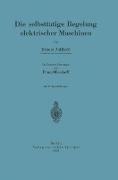- Start
- The Archaeology of the Essex Coast, Volume II: Excavations at the Prehistoric Site of the Stumble
The Archaeology of the Essex Coast, Volume II: Excavations at the Prehistoric Site of the Stumble
Angebote / Angebote:
This report describes the unusual diversity of archaeological evidence found at the Stumble, views it within its immediate and regional environmental setting and within the context of the archaeological landscape of the region, a landscape that is becoming better known thanks to recent rescue excavations at nearby Chigborough and Slough House Farms.The intertidal site of the Stumble is named after a mud bank in the Blackwater Estuary 700-800m east of the Neolithic site. The site is fully estuarine, being covered at high tide by some 3m of water, and positioned between 10 and 250m from the seaward edge of the saltmarsh. The occupation phases present: earlier and later Neolithic, Early Bronze Age, Iron Age, Roman, Anglo-Saxon and post-medieval are all well-represented on neighbouring dry land sites so the excavation of the Stumble, in view of the technical problems involved, requires some justification.Primarily, the types of evidence to be found at this site can usually only be found together on inter-tidal or wetland sites. Hence the Neolithic is represented by an intact land surface strewn with occupation debris and peppered by pits of various dimensions. Neither of these things would have survived the millennia of ploughing that have transformed most inland Neolithic habitation sites into little more than lithic scatters. This virtually intact Neolithic site was occupied during the 3rd millennium BC and a little earlier, when sea levels were significantly lower, so there is no preservation of waterlogged wood on the Neolithic site. Nevertheless, the quantity and quality of remaining inorganic remains is sufficient to justify excavation. The later Neolithic record is of a similar 'dry land' site inundated by a gradually rising sea level, but by the Iron Age the archaeological record had become quite different. Occupation debris, sherds and other artefacts are virtually absent, and instead wooden structures, single or multiple posts, brushwood and interwoven wattles remain. Clearly, at this stage of the Holocene marine transgression the locus of settlement had moved inland beyond the tidal fringe and the evidence from the Stumble must therefore represent activity that took place on salt marshes, along tidal creeks or on the mudflats.
Folgt in ca. 15 Arbeitstagen




